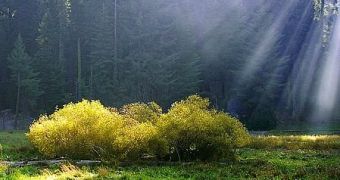Up until recently, it was generally agreed on that natural calamities such as wildfires, avalanches, floods, earthquakes and the like only cause damage to the environment, as vast areas of land end up being virtually destroyed.
As interesting as it might sound, an environmental scientist from the Washington State University now claims that, leaving the initial damages they cause aside, these much feared natural phenomena may in fact help boost biological diversity.
Mark Swanson's rationale is as follows: by leaving behind considerable amounts of woody debris and snags (i.e. dead trees), these natural disasters, in fact, provide various plant and animal species with new opportunities to start afresh.
To be more exact, once the land is cleared in this rather abrupt manner, the plant species which previously had their growth hindered by other types of vegetation can begin to develop.
As well as this, the trees brought down by whatever calamity struck the region make for quite appealing homes for several animal species.
Mark Swanson offers the example of wildfires in the Northern Rockies and argues that, “Severe fire in the northern Rockies creates conditions for some rare birds that depend on abundant dead trees, like the black-backed woodpecker. It can benefit a host of other organisms, too, like elk, deer, bighorn sheep, some frog species, and many more.”
The researcher also points out that, in the light of these new pieces of information, land managers can become much more efficient in implementing conservation projects aimed at keeping various plant and animal species from becoming extinct, since such portions of cleared land can act as “safe havens” for incipient biodiversity.
To support his argument, Mark Swanson further adds that, “The 1980 eruption of Mt. St. Helens, for example, has created very diverse post-eruption conditions, and has some of the highest plant and animal diversity in the western Cascades range.”
These findings are to be presented to the general public during this week's conference of the Ecological Society of America in Portland.

 14 DAY TRIAL //
14 DAY TRIAL //